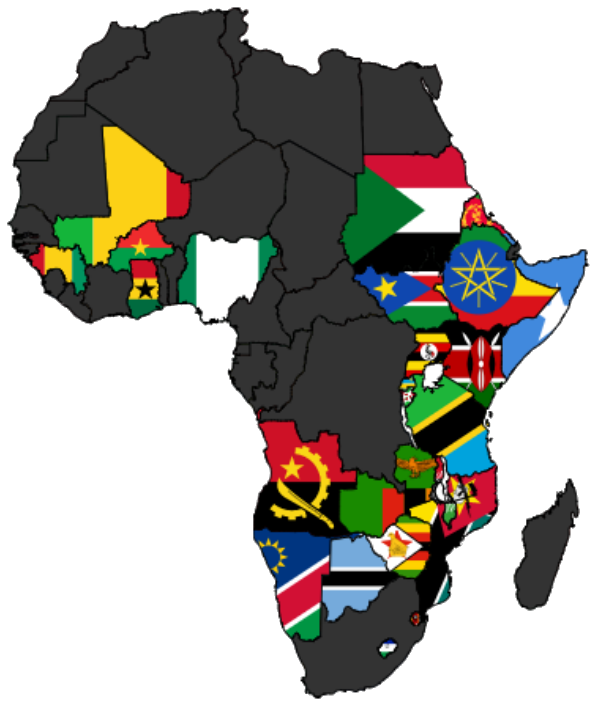In March 2013, Africa was identified as the world’s poorest inhabited continent. This situation can be attributed to a number of factors ranging from historical, environmental, political, economic and social. Africa has a population of approximately 1.2 billion making it the second most populous continent in the world after Asia. Out of these, 70% depend on Agriculture for their livelihoods. To add to this, Africa has roughly 60% of the world’s uncultivated arable land. These statistics render Agriculture an integral part in the effort to alleviate poverty in Africa.
The first conference of Ministers of Agriculture of the African Union was held in Maputo on 2nd July 2003 to discuss issues related to agricultural production and food security. The conference resolved to implementing, as a matter of urgency, the Comprehensive Africa Agriculture Development Programme (CAADP) and flagship projects and evolving Action Plans for agricultural development, at the national, regional and continental levels. It was agreed that sound policies needed to be adopted for agricultural and rural development. Members committed to allocate at least 10% of national budgetary resources for their implementation within five years.
The role of agricultural development
The potential agriculture has in alleviating poverty in Africa is immense. According to Economic Commission for Africa (ECA), four out of five people in Africa depend on agriculture for their livelihoods. However, thousands still languish in poverty, malnourished and live below a dollar a day due to low agricultural development. The potential agriculture has in lifting masses out of poverty is clearly demonstrated in a World Bank report that shows China’s agricultural development was responsible for the 45% decline in rural poverty between 1981 and 2001. Agriculture still remains a vital industry in China employing over 300 million farmers. Investment in agricultural development over the years has seen China, accounting for only 10% of arable land worldwide, produce food for 20% of the world’s population. On the same report, Ghana has managed to reduce poverty rates by 24% over the last 15 years due to promising agricultural output. Recently, the government of Ghana stated that it intends to bank on agriculture’s value chain to create 1.5 million jobs by 2018 and reduce its import bill by producing more food.
These two examples demonstrate how having the right agricultural policies and priorities in place can improve the socio-economic well-being of a society. Several factors have hampered agriculture’s potential in Africa. These include; lack of public investment which provides access to land and irrigation systems, lack of knowledge on storage of agricultural output leading to post harvest losses, high cost of farm inputs such as fertilizer, seeds and veterinary drugs, poor technology, poor supply chain management and dependency on relief food.
Measures have to be taken to address these factors which lead to poverty as a result of income lost through failure to harness the potential agriculture presents. Emphasis needs to be put towards agricultural development. Public spending in specific sectors has to be boosted. Kenya, under Vision 2030 (Kenya’s long-term economic blue print), intends to transform the agricultural sector into an innovative, commercially-oriented and modern sector by the year 2030.
Some of the key issues that need to be addressed in order to bolster agricultural development and productivity include; infrastructure, cost of inputs, technology, agricultural education and value addition. Addressing these issues will see African countries benefit from commitments of $30 billion that have been made by African leaders, development banks, the private sector and international donors during the African Green Revolution Forum held last year in Nairobi.
Infrastructure – Farmers rely on dependable infrastructure to deliver their products and expand their operations. A modern road/rail network and proper storage facilities become a necessity. Since most farm produce are highly perishable, proper storage and an efficient transport system to ready markets has to be guaranteed. Erratic weather patterns make irrigation a necessity. A modern irrigation system ensures consistent water supply. With a rising population and changing weather patterns, proper irrigation systems will curb the aftermath and ensure a steady supply of food. Irrigation guarantees plant growth and maximizes plant potential ensuring quality produce and value for money. Steady water supply assures smallholder farmers of a steady revenue stream. Irrigation is on the rise in Africa. In Tanzania, institute figures show that the area of small farms with access to irrigation has risen from 33,500 hectares in 2010 to approximately 150,000 hectares today. This is a testimony of the role irrigation plays in uplifting livelihoods and boosting food security.
Inputs – Due to low incomes in rural areas, farm inputs have to be affordable for them to bolster food production. Fertilizer, seeds, veterinary drugs and pesticides need to be offered at prices that are within the reach of most smallholder farmers. Governments should strive to invest in the production of fertilizer or subsidize imported fertilizer. In some locations, due to lack of knowledge such as rotational farming, farm land is being overused. Fertilizer is essential in revitalizing such farms. Lack of fertilizer implies low yields. High cost of agricultural inputs eats into profit margins. With the rise in the cost of living, some smallholders are forced to seek alternatives that are commercially viable consequently dealing a blow to food security.
Technology – When it comes to agriculture, technology entails more than just mobile access and Information Communication Technology. Mobile technology in Africa is already creating positive impact on smallholders through various mobile applications that support agriculture such as M-shamba, Rural eMarket and iCow. However, this is not enough. Most smallholders still face post-harvest losses. Addressing this loss of potential income through simple storage techniques such as hermetic cocoons, polypropylene storage bags and metal silos goes a long way in curbing post-harvest losses for smallholder farmers. An investment in technology and proper research and development is essential.
Education – Proper agricultural education ensures smallholder farmers become more informed thus avoid evitable risks. Without proper training on farming techniques, smallholders become vulnerable to external shocks such as climate change and a drop in prices of products. Knowing the type of crops to plant and how to properly store harvested produce goes a long way in transforming the livelihoods of rural farmers. Educating smallholder farmers requires concerted effort between the government and local communities to ensure knowledge is imparted across the board reaching both literate and illiterate farmers.
Value addition – Value addition in agriculture basically means increasing the value of primary agricultural produce. This happens through processing, packaging, drying, extracting or any other type of process that differentiates the final product from its original raw form. Value addition increases returns to farmers, opens up new markets and increases the shelf life of farm products. Governments must invest in local communities to facilitate agro-processing which will in turn reduce poverty through improved earnings.
Deforestation – Deforestation is considered one of the contributing factors to global climate change. According to Douglas Sheil, an associate researcher with the Center for International Forestry Research (CIFOR), erratic rainfall could worsen with deforestation. Most rural dwellers, who happen to be farmers, carry out deforestation either to get rid of wild animals that feast on their farm produce before harvesting season, or use the trees as an alternative source of income.
Poverty is a complex problem but not unique to Africa and fighting it requires long term strategic planning and investment in sectors of the economy that will yield sustainable returns in terms of income generation. Agriculture has all the ingredients required for attaining Millennium Development Goals (MDGs) and alleviating poverty in Africa. Having the right agricultural policy and goodwill will play a major role and go a long way in achieving this objective.




